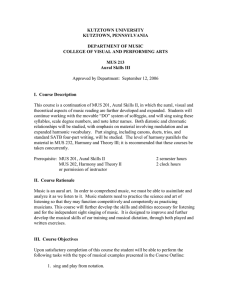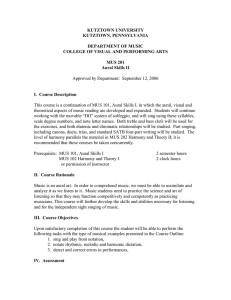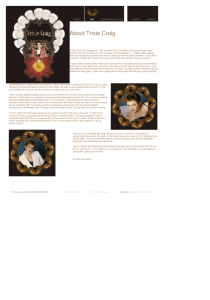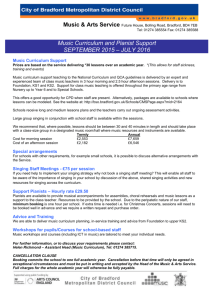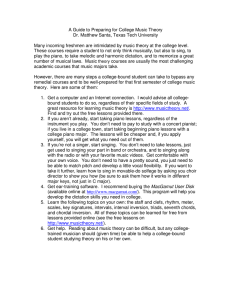KUTZTOWN UNIVERSITY KUTZTOWN, PENNSYLVANIA DEPARTMENT OF MUSIC
advertisement
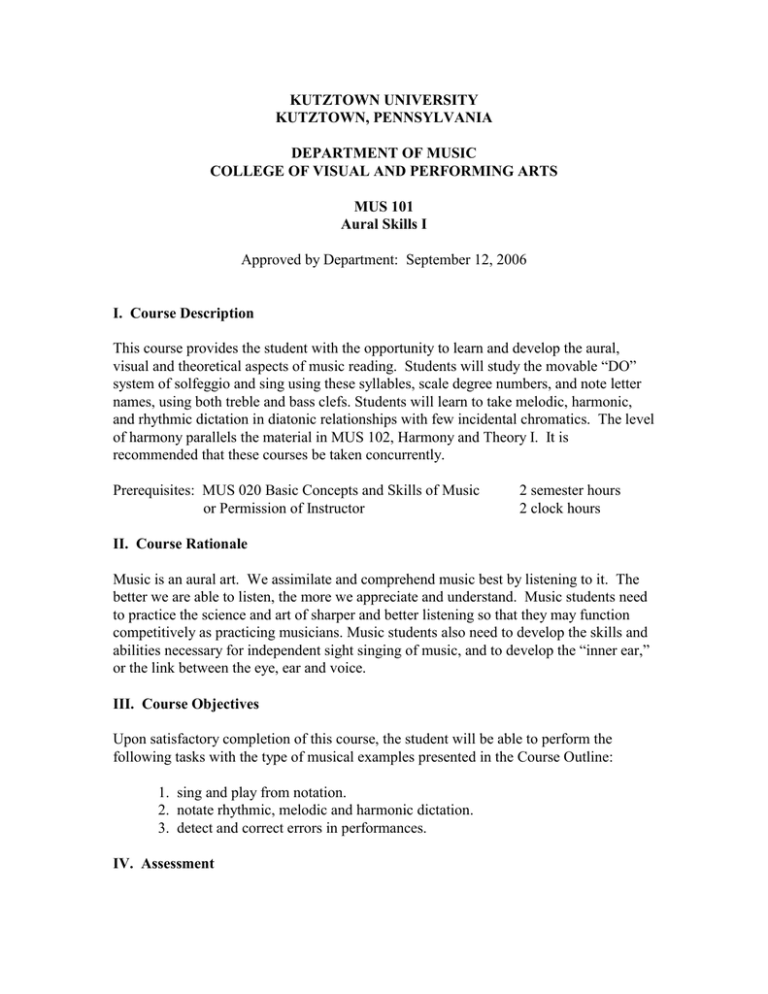
KUTZTOWN UNIVERSITY KUTZTOWN, PENNSYLVANIA DEPARTMENT OF MUSIC COLLEGE OF VISUAL AND PERFORMING ARTS MUS 101 Aural Skills I Approved by Department: September 12, 2006 I. Course Description This course provides the student with the opportunity to learn and develop the aural, visual and theoretical aspects of music reading. Students will study the movable “DO” system of solfeggio and sing using these syllables, scale degree numbers, and note letter names, using both treble and bass clefs. Students will learn to take melodic, harmonic, and rhythmic dictation in diatonic relationships with few incidental chromatics. The level of harmony parallels the material in MUS 102, Harmony and Theory I. It is recommended that these courses be taken concurrently. Prerequisites: MUS 020 Basic Concepts and Skills of Music or Permission of Instructor 2 semester hours 2 clock hours II. Course Rationale Music is an aural art. We assimilate and comprehend music best by listening to it. The better we are able to listen, the more we appreciate and understand. Music students need to practice the science and art of sharper and better listening so that they may function competitively as practicing musicians. Music students also need to develop the skills and abilities necessary for independent sight singing of music, and to develop the “inner ear,” or the link between the eye, ear and voice. III. Course Objectives Upon satisfactory completion of this course, the student will be able to perform the following tasks with the type of musical examples presented in the Course Outline: 1. sing and play from notation. 2. notate rhythmic, melodic and harmonic dictation. 3. detect and correct errors in performances. IV. Assessment Assessment of each student’s level of accomplishment with reference to the course objectives will be based upon the following: 1. 2. 3. 4. in-class dictation, singing, and/or error detection quizzes daily assignments singing exams written exams (including dictation and error detection) V. Course Outline 1. Melodies. Basic four and eight measure diatonic melodies in all commonly used keys (to five sharps and five flats). Melodies will progress in difficulty from scale-wise motion through skips based on the tonic chord, skips based on the dominant and subdominant chords, and into secondary chord skips. 2. Intervals. Written and played intervals from minor seconds through octaves. 3. Scales. Written and played major scales and all forms of minor scales (natural, harmonic and melodic). 4. Triads. Written and played major and minor triads in root position and all inversions. 5. Harmonic Progressions. Written and played basic harmonic progressions consisting of primary triads. Harmonic dictation will include notation of the soprano and bass lines in short four-part progressions and the analysis of the chords. VI. Instructional Resources Adler, Samuel. Sight Singing, 2nd ed. New York: W. W. Norton and Company, 1997. Benjamin, Thomas, Michael Horvit and Robert Nelson. Music for Sight Singing, 2nd ed. Belmont, CA: Wadsworth Publishing Company, 1994. Benward, Bruce and J. Timothy Kolosick. Ear Training: A Technique for Listening, sixth ed. New York: McGraw Hill, 2000. Berkowitz, Sol, Gabriel Fontrier and Leo Kraft. A New Approach to Sight Singing, 3rd ed. New York: W. W. Norton and Company, 1986. Blombach, Anne. MacGAMUT. Columbus, OH: Music Software International, 2003. Carr, Maureen A. and Bruce Benward. Sight Singing Complete, 7th ed. New York: McGraw Hill, 2007. Christy, Van A. and John G. Patton. Foundations in Singing, 6th ed. Dubuque: Brown & Benchmark, 1997. Durham, Thomas. Beginning Tonal Dictation. Prospect Heights, IL: Waveland Press, Inc. 1994 Fish, Arnold and Norman Lloyd. Fundamentals of Sight Singing and Ear Training. Prospect Heights: Waveland Press, 1993. Gould, Murray. Paths to Musical Thought. New York: Holt, Rinehart and Winston, 1979. Hackett, Patricia. The Melody Book. Upper Saddle River, NJ: Prentice Hall, 1998. Hackett, Patricia and Carolynn Lindemann. The Musical Classroom, 3rd ed. Englewood Cliffs, NJ: Prentice Hall, 1995. Hall, Ann Carothers. Studying Rhythm, 2nd ed. New Jersey: Prentice Hall, 1998. Horvit, Michael, Timothy Koozin, and Robert Nelson. Music for Ear training: CD-ROM and workbook, 2nd ed. Belmont, CA: Wadsworth Publishing Company, 2005. Karpinski, Gary S. Manual for Ear Training and Sight Singing. New York, W. W. Norton & Company, 2007. Kazez, Daniel. Rhythm Reading. Mountain View, CA: Mayfield Publishing Company, 1989. Kraft, Leo. A New Approach to Ear Training, second edition. New York: W. W. Norton and Company, 1999. Ottman, Robert W. Music for Sight Singing. Paramus: Prentice-Hall, 1996. Trubitt, Allen R. and Robert S. Hines. Ear Training and Sight Singing, Books I and II. New York: Schirmer Books, 1980. Yasui, Byron and Allen Brubitt. Basic Sight Singing. Mountain View: Mayfield Publishing Company, 1989.
